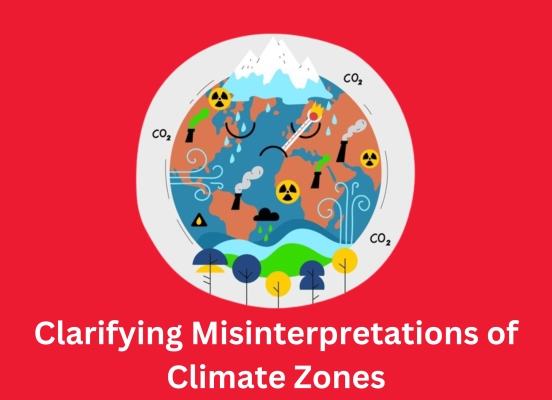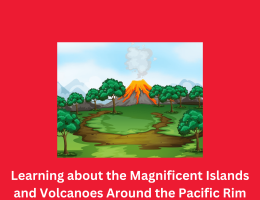
Dispel the Myths: Clarifying Misinterpretations of Climate Zones
- By admin --
- Thursday, 07 Mar, 2024
Introduction:
Weather zones have a significant impact on global ecosystems and environmental conditions. However, there are often misconceptions about the patterns of fantastic weather zones, which leads to preconceptions about the climates of other locations. We hope to shed light on the complex and varied nature of the world's climates by dispelling some prevalent misconceptions regarding climatic zones, such as the notion that all tropical regions are perpetually warm or that deserts burn without fail.
The Complexity of Climate Zones:
Latitude, top, closeness to bodies of water, and styles of air flow are some of the elements that shape climate zones. A enormous spectrum of climatic conditions, from tropical climates diagnosed for their warm temperature and humidity to polar climates marked by means of severe cold, are produced by means of the interaction of these factors. Furthermore, differences due to the season, microclimates, and variations in rainfall styles all add to the worldwide diversity of weather zones.
Misconceptions about Tropical Regions:
One such fallacy is the perception that all tropical locations enjoy year-spherical temperatures. Tropical regions do have extremely excessive temperatures, but additionally they have stunning seasons, a variety of rainfall styles, and unique microclimates. While tropical savannas could have each moist and dry seasons, tropical rainforests generally have high humidity and constant rainfall. Moreover, mountainous tropical regions just like the Andes or the Himalayas can be the cause of the decrease temperatures.
The idea that all tropical regions are thick jungles overflowing with unusual flora and fauna is some other delusion. Although many equatorial areas do have tropical rainforests, tropical climates can assist quite a few different ecosystems, which include savannas, mangroves, and dry forests. Because of the intricate interactions between climate, topography, and ecological approaches, every of those ecosystems has wonderful features and a various variety of species.
Misconceptions about Deserts:
Like this, many people have misunderstandings about infertile areas and generally consider them exceptionally hot. Although deserts are generally associated with extreme heat, they also exhibit considerable seasonal and daily temperature variability. Strong temperature differences can occur in areas where daylight can reach exceptionally high degrees and night temperatures can be low.
However, not every desert is currently scorching throughout the entire year. Some wilderness tracts, such as the Gobi Desert in Asia and the Patagonian Desert in South America, experience exceptionally cold winters and heavy snowfall. Additionally, the influence of marine air currents may result in relatively mild temperatures in coastal deserts such as Chile's Atacama Desert. These versions, by highlighting the range of climatic conditions that may be motivated there, cast serious doubt on the idea that deserts are permanently warm, harmful environments.
Consequences of Misinterpretation:
Inaccurate evaluations of the climate zone may have a substantial effect on public opinion and the media. Erroneous or simplistic depictions of high-quality locations can end result from misconceptions, which can also support preconceived notions and deter attempts to deal with environmental issues. If tropical locations are commonly idea of as heat, humid rainforests, as an instance, we might overlook the importance of a few ecosystems, the need for conservation, and sustainable development measures.
Likewise, myths about desert settings may make contributions to wrong assumptions about the adaptability and resilience of desolate tract habitats. Rare plant and animal species that have advanced specific variations to survive in opposed settings may be found in barren region areas. Policymakers and conservationists can expand extra success plans for managing and protecting those delicate ecosystems if they are better acquainted with the subtleties of arid tract temperatures.
Promoting Climate Literacy:
Dispelling misunderstandings about weather zones requires promoting weather literacy and developing an advanced know-how of global climatic dynamics. Education programs that cowl the fundamentals of climate science, which includes the factors influencing climatic zones and the sorts of climates determined round the arena, can empower humans to make wise choices and resource in the combat towards international warming.
Furthermore, educating people about the relationships between climate zones and ecosystems can aid in their greater understanding of the richness and diversity of the natural world. By highlighting the unique characteristics and ecological importance of different climate zones, we may also promote a sense of responsibility and care for protecting the planet's herbal heritage.
Conclusion:
Misconceptions approximately climate zones end result from easy depictions and lack of knowledge of the various and complicated nature of worldwide climates. Examples of these misconceptions consist of believing that all tropical locations are invariably hot or that deserts are constantly sizzling. We can inspire a more expertise of the intricacies of climate systems and the importance of protecting the planet's ecological variety by means of dispelling these myths and advancing weather literacy. We may additionally undertaking to create a future this is extra strong and sustainable for absolutely everyone via teaching humans, growing awareness, and making properly-knowledgeable selections.





